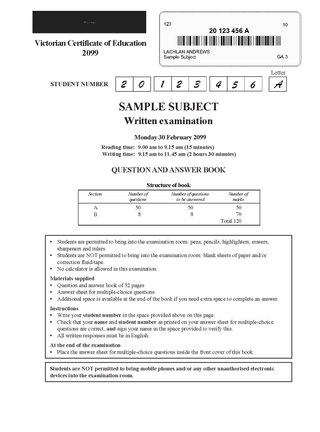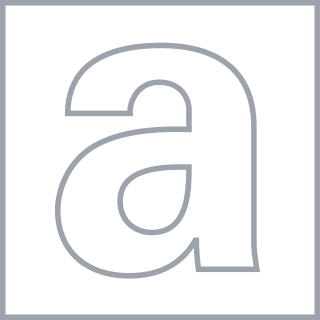The Higher School Certificate (HSC) is the credential awarded to secondary school students who successfully complete senior high school level studies in New South Wales and some ACT schools in Australia, as well as some international schools in Singapore, Malaysia, Indonesia, China, Papua New Guinea and Tonga. It was first introduced in 1967, with the last major revision coming into effect in 2019. It is currently developed and managed by the NSW Education Standards Authority (NESA).

The Victorian Certificate of Education is one credential available to secondary school students who successfully complete year 11 and 12 in the Australian state of Victoria as well as in some international schools in China, Malaysia, Philippines, Timor-Leste, and Vietnam.
In the Scottish secondary education system, the Higher is one of the national school-leaving certificate exams and university entrance qualifications of the Scottish Qualifications Certificate (SQC) offered by the Scottish Qualifications Authority. It superseded the old Higher Grade on the Scottish Certificate of Education (SCE). Both are normally referred to simply as "Highers".
The South Australian Certificate of Education (SACE) is awarded to students who have successfully completed their senior secondary schooling in the state of South Australia.
The National Certificate of Educational Achievement (NCEA) is the official secondary-school qualification in New Zealand. Phased in between 2002 and 2004, it replaced three older secondary-school qualifications. The New Zealand Qualifications Authority administers NCEA.

Twelfth grade is the twelfth year of formal or compulsory education. It is typically the final year of secondary school and K–12 in most parts of the world. Students in twelfth grade are usually 17–18 years old. Some countries have a thirteenth grade, while other countries do not have a 12th grade/year at all.
The Universities Admission Index (UAI) was used in New South Wales and the Australian Capital Territory, Australia, as the primary criterion for entry into most undergraduate-entry university programs. It was a number between 0 and 100, occurring in increments of 0.05 and indicating the rounded percentile rank of a student who undertook the Higher School Certificate or ACT Year 12 Certificate with a valid quantity and combination of units of study. It was replaced in N.S.W with the Australian Tertiary Admission Rank (ATAR) in 2009. Prior to the UAI the ACT used its own Tertiary Entrance Rank

The International General Certificate of Secondary Education (IGCSE) is an English language based secondary qualification similar to the GCSE and is recognised in the United Kingdom as being equivalent to the GCSE for the purposes of recognising prior attainment. It was developed by Cambridge Assessment International Education. The examination boards Edexcel, Learning Resource Network (LRN), and Oxford AQA also offer their own versions of International GCSEs. Students normally begin studying the syllabus at the beginning of Year 10 and take the test at the end of Year 11. However, in some international schools, students can begin studying the syllabus at the beginning of Year 9 and take the test at the end of Year 10.

The Australian Qualifications Framework (AQF) specifies the standards for educational qualifications in Australia. It is administered nationally by the Australian Government's Department of Industry, with oversight from the States and Territories, through the Standing Council of Tertiary Education Skills and Employment. While the AQF specifies the standards, education and training organisations are authorised by accrediting authorities to issue a qualification.
The Overall Position (OP) was a tertiary entrance rank used in Queensland, Australia to guide selection into universities. Like similar systems used throughout the rest of Australia, the OP shows how well a student has performed in their senior secondary studies compared with all other OP-eligible students in Queensland. The system was introduced in 1992 and ended with the 2019 cohort.
The Tertiary Entrance Examination (TEE) was the standard academic examination for secondary students completing their twelfth year of schooling in Western Australia from the late 1970s to 2009. The TEE replaced the matriculation examinations. The exam results were used to determine the Tertiary Entrance Rank and the Tertiary Entrance Score. These metrics were used to determine eligibility for entrance to the tertiary institutions in the state.
The Western Australian Certificate of Education (WACE) is the credential awarded to students who have completed senior secondary education in the state of Western Australia. It is the Western Australian graduation certificate of the Australian Senior Secondary Certificate of Education. Students are required to meet various breadth and depth requirements, achievement standards and literacy and numeracy standards across their final years of schooling. As of the 2020 WACE, there are 106 courses available for students to study. Many WACE students are awarded an Australian Tertiary Admission Rank (ATAR), summarising their results across all areas of study into one ranking for the purposes of university admission. Students may choose from ATAR courses, which count directly towards their ATAR, Vocational Education and Training courses, which are more practical courses and can lead to further vocational opportunities, and, from 2021, General courses, which provide pathways to university, employment, or further vocational education and training. From 2010, the WACE replaced the Tertiary Entrance Exam (TEE), as the standard academic examination for school leavers in Western Australia.

The Tasmanian Certificate of Education (TCE) is the main credential awarded to secondary school students who successfully complete senior high school level studies in Tasmania, Australia. It was introduced in 1992 to replace Tasmania's old "High School Certificate", and partially restructured for 2007.

The A-level is a subject-based qualification conferred as part of the General Certificate of Education, as well as a school leaving qualification offered by the educational bodies in the United Kingdom and the educational authorities of British Crown dependencies to students completing secondary or pre-university education. They were introduced in England and Wales in 1951 to replace the Higher School Certificate. The A-level permits students to have potential access to a chosen university they applied to with UCAS points. They could be accepted into it should they meet the requirements of the university.

Education in Western Australia consists of public and private schools in the state of Western Australia, including public and private universities and TAFE colleges. Public school education is supervised by the Department of Education, which forms part of the Government of Western Australia. The School Curriculum and Standards Authority is an independent statutory authority responsible for developing a curriculum and associated standards in all schools, and for ensuring standards of student achievement, and for the assessment and certification according to those standards.
The Senior Secondary Certificate of Education (SSCE) is the graduation certificate awarded to most students in Australian high schools, and is equivalent to the Advance Placement in North America and the GCE A-Levels of the United Kingdom. Students completing the SSCE are usually aged 16 to 18 and study full-time for two years. In some states adults may gain the certificate through a Technical and Further Education college or other provider.

The Australian Tertiary Admission Rank (ATAR) for all domestic students, or the ATAR-based Combined Rank (CR) for all International Baccalaureate (IB) students, are the primary criteria for determining the Selection Rank (SR) for admission into undergraduate courses in Australian public universities. Domestic Students are students who are Australian or New Zealand citizens, or Australian permanent residents, or the holder of long-term refugee visa. ATAR & CR are not applicable for international students as they must apply directly to each university separately and their SR is calculated by the university. The ATAR is calculated by each state or territory's own state-level Tertiary Admission Center (TAC) for all domestic students studying within their geographical limits. Interstate Domestic Students must apply to the TAC of their respective state. The Selection Rank is calculated by each University separately based on the ATAR or CR as well as additional points for each university's unique criteria such as a student's educational disadvantage or subject performance. ATAR is not a mark, but rather a percentile ranking between 0.00 and 99.95 which shows the student’s relative position compared to all other students in the range of 16 to 20 years old who would have completed their respective year 12 exams in that state in a year.
The Senior External Examination is an annually held Queensland examination, serving as a pathway to tertiary study for students who have been away from studies for a long period of time, who left school before attaining their Queensland Certificate of Education (QCE) or had performed poor in their studies and need to improve their selection rank for university. In addition, high-school students can follow the examination to partake in subjects not offered by their schools, but they will usually have to find private tuition. Senior External Examination is recognized by the Queensland Studies Authority (QSA) and the Queensland Tertiary Admissions Centre (QTAC) who together govern high-school subjects and tertiary admission for Queensland.

St James Lutheran College is an independent, co-educational Kindergarten to Year 12 Lutheran College under the Lutheran Church of Australia. The school is located in Urraween, a suburb of Hervey Bay, South East Queensland, Australia. St James Lutheran College currently caters for approximately 800 students, after opening in 2003 as one of the newest Christian schools on the Fraser Coast.
A high school diploma is a diploma awarded upon graduation of high school. A high school diploma is awarded after completion of courses of studies lasting four years, typically from grade 9 to grade 12. It is the school leaving qualification in the United States and Canada.








